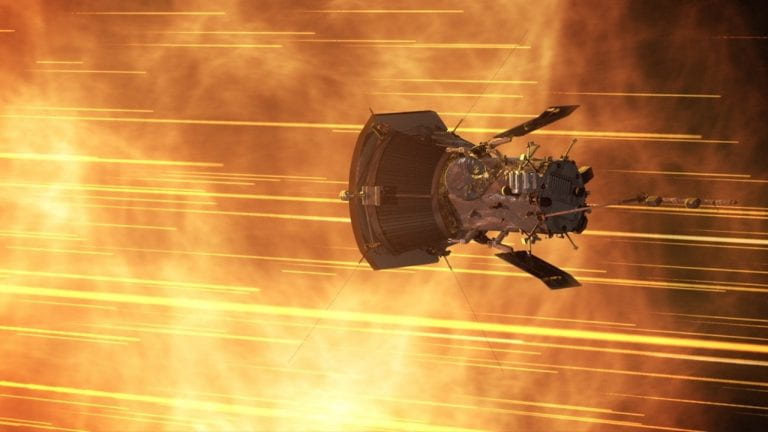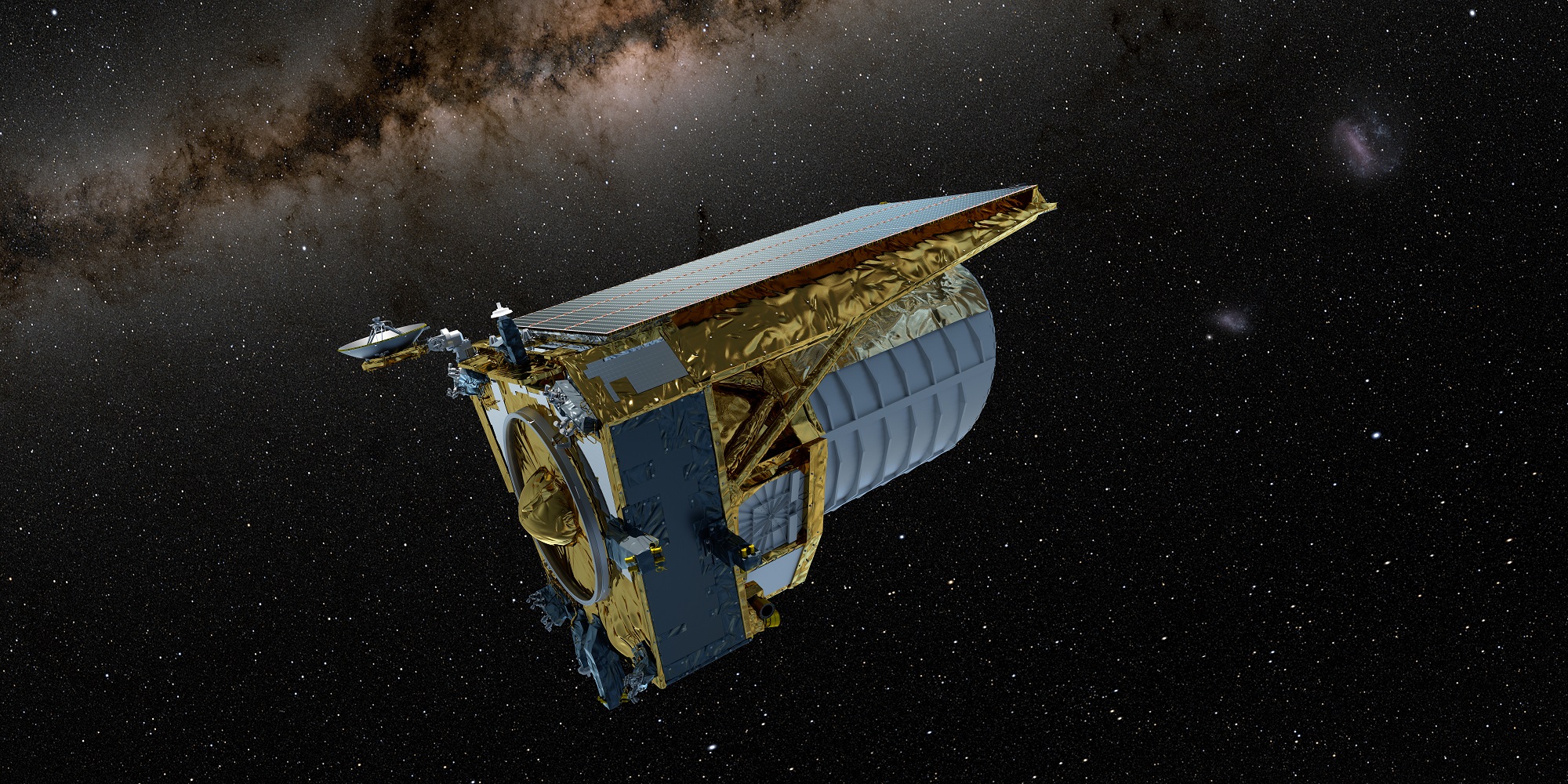NASA’s Parker Solar Probe (PSP) was launched on August 12, 2018, with the goal of becoming the first spacecraft to touch the Sun while teaching us more about our host star than any spacecraft or solar instrument in human history. Now, a recent study submitted to The Astrophysical Journal discusses the incredible data that PSP collected on coronal mass ejections (CMEs) over a four-year period. This study holds the potential to help scientists and the public better understand the CMEs and how they contribute to space weather.
Continue reading “Parker Solar Probe Was Blasted by Coronal Mass Ejections 28 Times in 4 Years”Ice is Starting to Cloud Euclid's Optics
On July 1st, 2023, the European Space Agency (ESA) launched the Euclid Observatory, a mission that will spend the next six years investigating the composition and evolution of the Universe. In particular, Euclid will observe how the Universe has expanded over the past 10 billion years to test theories about Dark Energy. While fine-tuning and calibrating the telescope’s instruments in preparation for the mission’s first survey, the mission team noticed that a few layers of water ice formed on its mirrors after it entered the freezing cold of space.
While common, this is a problem for a highly sensitive mission like Euclid, which requires remarkable precision to investigate cosmic expansion. After months of research, the Euclid team tested a newly designed procedure to de-ice the mission’s optics. On March 20th, the ESA announced that the team’s de-icing approach worked (so far) and that Euclid’s vision has been restored. If the method proves successful, it will have validated the mission team’s plan to keep Euclid‘s optical system working for the rest of its mission.
Continue reading “Ice is Starting to Cloud Euclid's Optics”Northrup Grumman is Studying How to Build a Railway on the Moon
Roughly two years and six months from now, as part of NASA’s Artemis III mission, astronauts will set foot on the lunar surface for the first time in over fifty years. Beyond this mission, NASA will deploy the elements of the Lunar Gateway, the Artemis Base Camp, and other infrastructure that will allow for a “sustained program of lunar exploration and development.” They will be joined by the European Space Agency (ESA), the China National Space Agency (CNSA), and Roscosmos, the latter two collaborating to build the International Lunar Research Station (ILRS).
Anticipating this process of lunar development (and looking to facilitate it), the Defense Advanced Research Projects Agency (DARPA) launched the 10-year Lunar Architecture (LunA-10) Capability Study in August last year. In recent news, the agency announced that it selected Northrop Grumman to develop a moon-based railroad network. This envisioned network could transport humans, supplies, and resources for space agencies and commercial ventures, facilitating exploration, scientific research, and the creation of a lunar economy.
Continue reading “Northrup Grumman is Studying How to Build a Railway on the Moon”Little Red Dots in Webb Photos Turned Out to Be Quasars
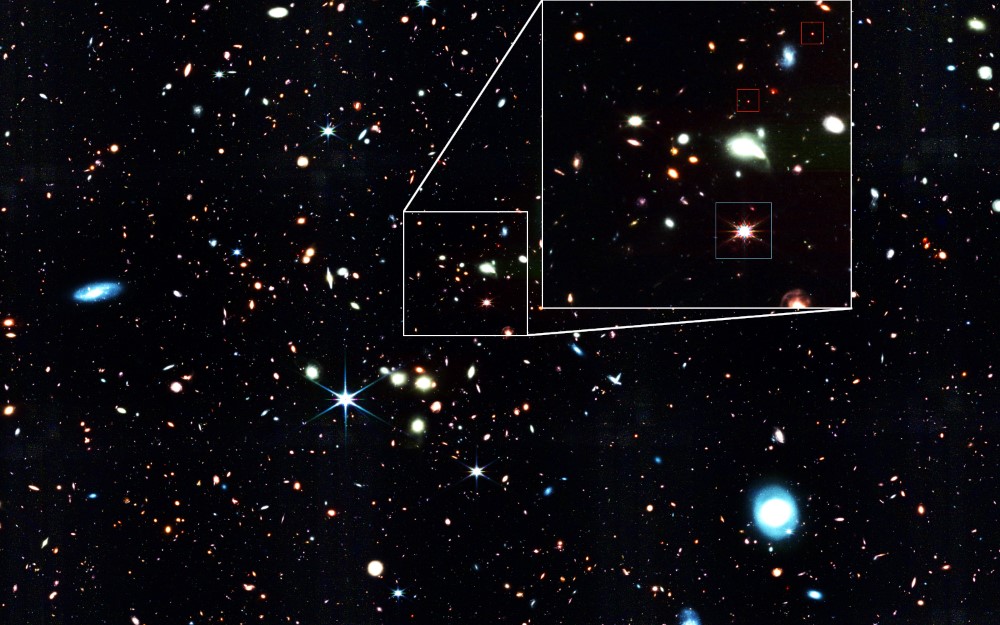
In its first year of operation, the James Webb Space Telescope (JWST) made some profound discoveries. These included providing the sharpest views of iconic cosmic structures (like the Pillars of Creation), transmission spectra from exoplanet atmospheres, and breathtaking views of Jupiter, its largest moons, Saturn’s rings, its largest moon Titan, and Enceladus’ plumes. But Webb also made an unexpected find during its first year of observation that may prove to be a breakthrough: a series of little red dots in a tiny region of the night sky.
These little red dots were observed as part of Webb’s Emission-line galaxies and Intergalactic Gas in the Epoch of Reionization (EIGER) and the First Reionization Epoch Spectroscopically Complete Observations (FRESCO) surveys. According to a new analysis by an international team of astrophysicists, these dots are galactic nuclei containing the precursors of Supermassive Black Holes (SMBHs) that existed during the early Universe. The existence of these black holes shortly after the Big Bang could change our understanding of how the first SMBHs in our Universe formed.
Continue reading “Little Red Dots in Webb Photos Turned Out to Be Quasars”Webb Continues to Confirm That Universe is Behaving Strangely
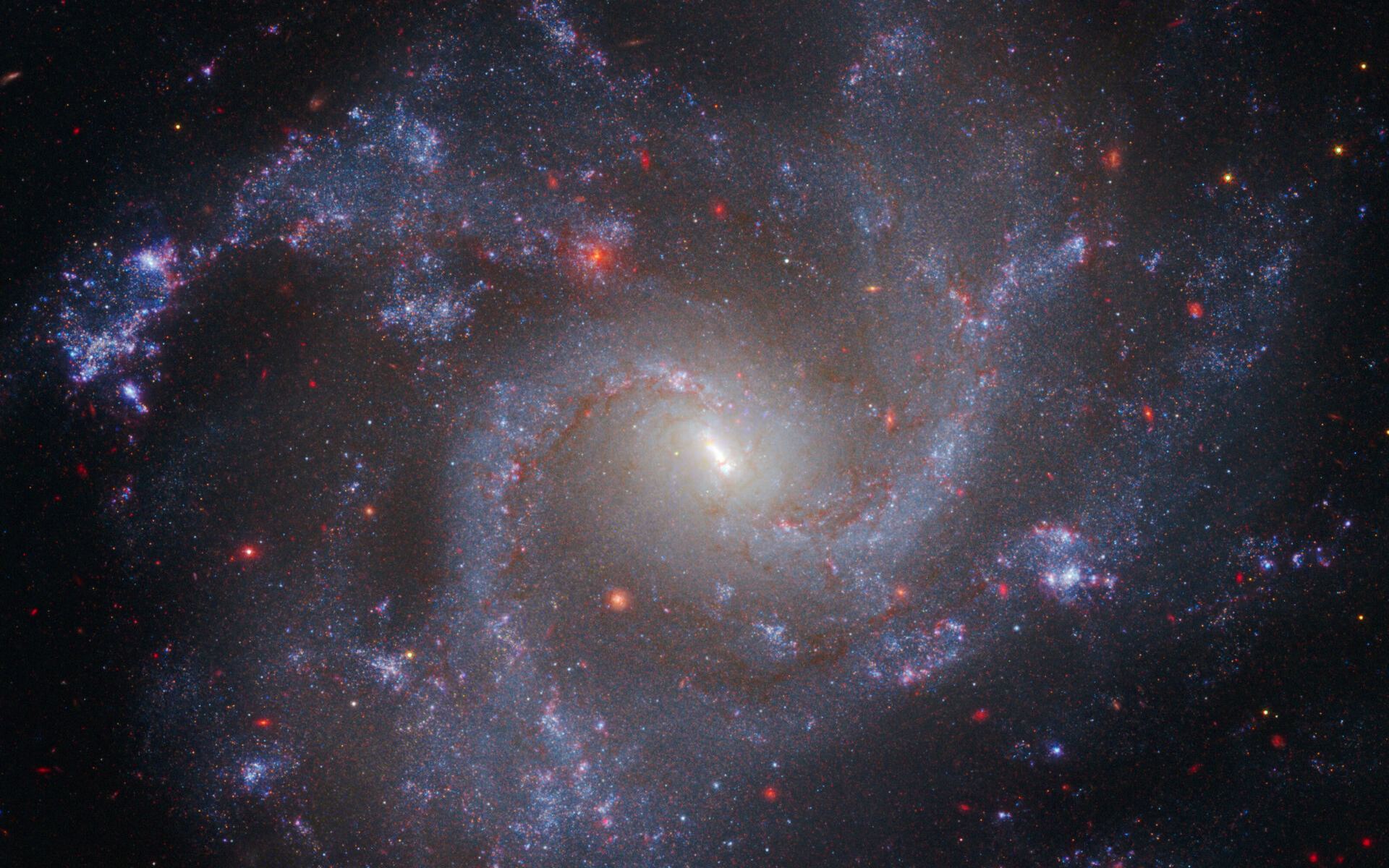
Over a century ago, astronomers Edwin Hubble and Georges Lemaitre independently discovered that the Universe was expanding. Since then, scientists have attempted to measure the rate of expansion (known as the Hubble-Lemaitre Constant) to determine the origin, age, and ultimate fate of the Universe. This has proved very daunting, as ground-based telescopes yielded huge uncertainties, leading to age estimates of anywhere between 10 and 20 billion years! This disparity between these measurements, produced by different techniques, gave rise to what is known as the Hubble Tension.
It was hoped that the aptly named Hubble Space Telescope (launched in 1990) would resolve this tension by providing the deepest views of the Universe to date. After 34 years of continuous service, Hubble has managed to shrink the level of uncertainty but not eliminate it. This led some in the scientific community to suggest (as an Occam’s Razor solution) that Hubble‘s measurements were incorrect. But according to the latest data from the James Webb Space Telescope (JWST), Hubble’s successor, it appears that the venerable space telescope’s measurements were right all along.
Continue reading “Webb Continues to Confirm That Universe is Behaving Strangely”NASA and Boeing Release New Rendering of their X-66 Sustainable Experimental Airliner

Climate change is arguably the single greatest threat facing the world today. According to the Sixth Assessment Report (AR6) by the UN Intergovernmental Panel on Climate Change (IPCC), average global temperatures are set to increase between 1.5 and 2 °C (2.7 to 3.6 °F) by mid-century. To restrict global temperatures to an increase of 1.5 C and avoid the worst-case scenarios, the nations of the world need to achieve net zero emissions by then. Otherwise, things will get a lot worse before they get better, assuming they ever do.
This means transitioning to cleaner methods in terms of energy, transportation, and aviation. To meet our climate commitments, the aviation industry is developing technology to significantly reduce air travel’s carbon footprint. To help meet this goal, NASA and Boeing have come together to create the X-66 Sustainable Experimental Airliner, the first experimental plane specifically focused on helping the U.S. achieve net-zero aviation. Last week, NASA released a new rendering of the concept, giving the public an updated look at the future of air travel.
Continue reading “NASA and Boeing Release New Rendering of their X-66 Sustainable Experimental Airliner”What Can We Learn Flying Through the Plumes at Enceladus?

In the next decade, space agencies will expand the search for extraterrestrial life beyond Mars, where all of our astrobiology efforts are currently focused. This includes the ESA’s JUpiter ICy moon’s Explorer (JUICE) and NASA’s Europa Clipper, which will fly past Europa and Ganymede repeatedly to study their surfaces and interiors. There’s also NASA’s proposed Dragonfly mission that will fly to Titan and study its atmosphere, methane lakes, and the rich organic chemistry happening on its surface. But perhaps the most compelling destination is Enceladus and the lovely plumes emanating from its southern polar region.
Since the Cassini mission got a close-up look at these plumes, scientists have been aching to send a robotic mission there to sample them – which appear to have all the ingredients for life in them. This is not as easy as it sounds, and there’s no indication flying through plumes will yield intact samples. In a recent paper, researchers from the University of Kent examined how the velocity of a passing spacecraft (and the resulting shock of impact) could significantly affect its ability to sample water and ice within the plumes.
Continue reading “What Can We Learn Flying Through the Plumes at Enceladus?”NASA Announces its 2025 Budget. Lean Times Ahead.
Space flight is an expensive business and that money has to come from somewhere. The White House has just released their budget for fiscal year 2025. What does that mean for NASA?, they will get $25.4 billion, the same as it received last year but $2 billion less than it requested. NASA Administrator Bill Nelson said the constraints come from a debt ceiling agreement that limits non-defence spending. Alas the $2 billion deficit means NASA will need to cut costs from various missions.
Continue reading “NASA Announces its 2025 Budget. Lean Times Ahead.”This Hot Jupiter is Doomed to Crash Into its Star in Just Three Million Years
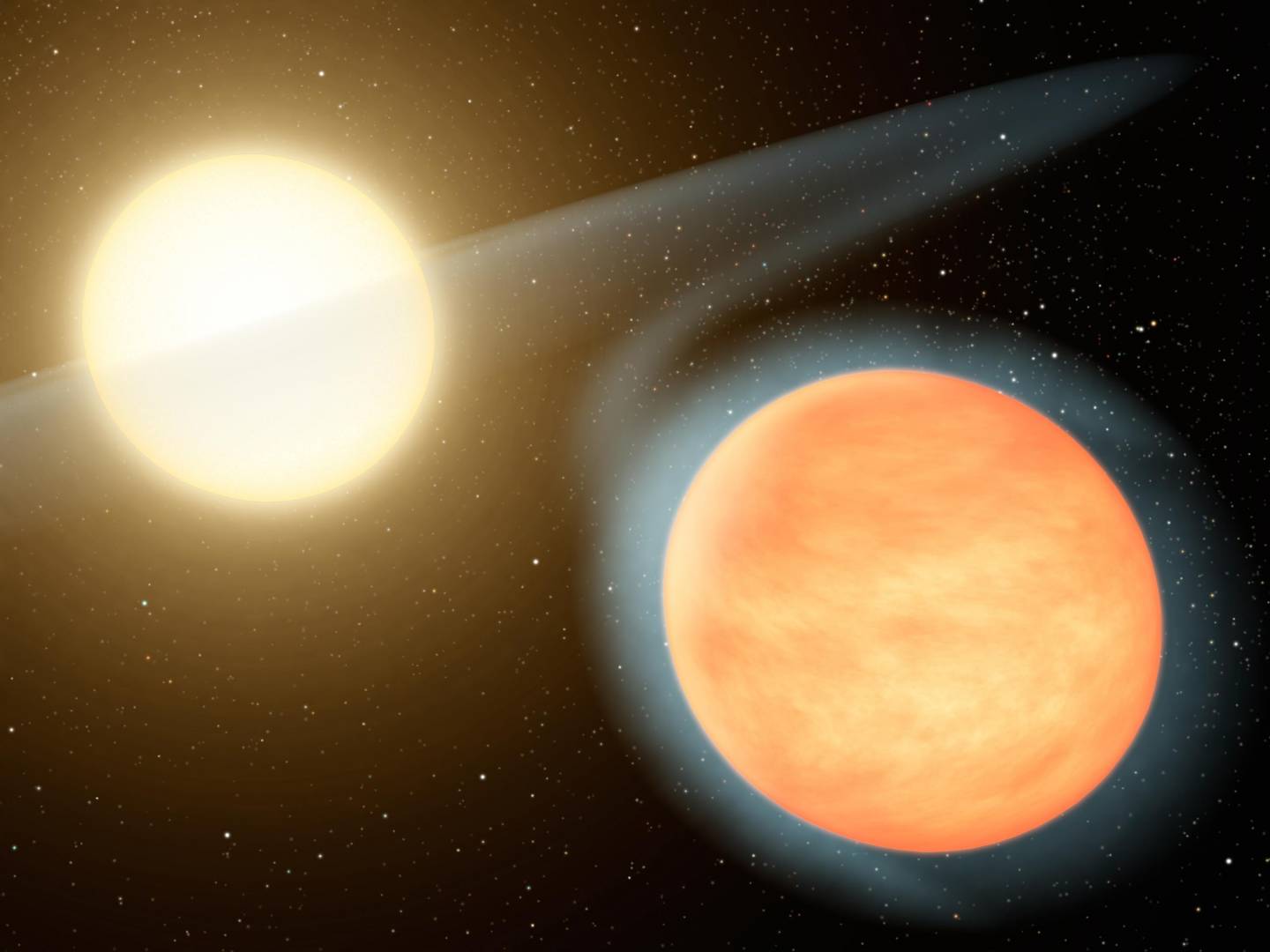
In 2008, astronomers with the SuperWASP survey spotted WASP-12b as it transited in front of its star. At the time, it was part of a new class of exoplanets (“Hot Jupiters”) discovered a little more than a decade before. However, subsequent observations revealed that WASP-12b was the first Hot Jupiter observed that orbits so closely to its parent star that it has become deformed. While several plausible scenarios have been suggested to explain these observations, a widely accepted theory is that the planet is being pulled apart as it slowly falls into its star.
Based on the observed rate of “tidal decay,” astronomers estimate that WASP-12b will fall into its parent star in about ten million years. In a recent study, astronomers with The Asiago Search for Transit Timing Variations of Exoplanets (TASTE) project presented an analysis that combines new spectral data from the Telescopio Nazionale Galileo (TNG) in La Palma with 12 years worth of unpublished transit light curves and archival data. Their results are consistent with previous observations that suggest WASP-12b is rapidly undergoing tidal dissipation and will be consumed by its star.
Continue reading “This Hot Jupiter is Doomed to Crash Into its Star in Just Three Million Years”Satellite Measurements Show That Global Carbon Emissions are Still Rising

According to the Intergovernmental Panel on Climate Change (IPCC) Sixth Assessment Report (AR6), human activities have significantly impacted the planet. As global greenhouse gas emissions (mainly carbon dioxide) have continued to increase, so too have global temperatures – with severe ecological consequences. Between 2011 and 2020, global surface temperatures rose by an estimated 1.07 °C (2.01 °F) above the average in 1850–1900. At this rate, temperatures could further increase by 1.5 to 2 °C (2.7 to 3.6 °F) in the coming decades, depending on whether we can achieve net zero by 2050.
Unfortunately, the data for the past year is not encouraging. According to the 2023 Global Carbon Budget (GCB), an annual assessment of Earth’s carbon cycle, emissions in 2023 continued to rise by 1.1 percent compared to the previous year. This placed the total fossil fuel emissions from anthropogenic sources at 36.8 billion metric tons (over 40 US tons) of carbon dioxide, with an additional 4.1 billion metric tons (4.5 US tons) added by deforestation, extreme wildfires, and other sources. This trend indicates we are moving away from our goals and that things will get worse before they get better!
Continue reading “Satellite Measurements Show That Global Carbon Emissions are Still Rising”
